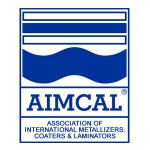
The printing and packaging industry has always been at the forefront of adopting new technologies to enhance efficiency and quality. One of the most transformative technologies in recent years is laser cutting, which has revolutionized the cutting and finishing processes for printing and packaging converters. This technology provides numerous benefits, including automation, speed and superior cut quality.
Automation in Cutting and Finishing
Laser cutting systems, such as those offered by companies like SEI Laser, have introduced a new level of automation to the printing and packaging industry. Traditional cutting methods often require manual setup and intervention, which can be time-consuming and prone to errors. In contrast, laser cutting systems are designed to operate with minimal human intervention.
Key Advantages of Automation:
- Precision and Consistency: Laser cutters are controlled by computer software, ensuring each cut is made with pinpoint accuracy. This eliminates the variability seen with conventional die-cutting methods and ensures consistent quality across all pieces.
- Reduced Setup Time: Traditional cutting methods require significant time to set up dies or blades. Laser cutters, however, can switch between different cutting tasks almost instantly by simply changing the digital design file. This reduces downtime and increases productivity.
- Waste Reduction: The precision of laser cutting minimizes material waste. The ability to nest designs closely together on the material sheet optimizes usage, making it both cost-effective and environmentally friendly.
- Flexibility: Laser cutters can handle a wide variety of materials and thicknesses, ranging from paper and cardboard to plastics and metals. This versatility makes them ideal for the diverse needs of printing and packaging converters.
Speed and Cut Quality Improvements
Laser cutting technology has significantly improved both the speed of cutting processes and the quality of cuts produced.
Enhanced Speed:
Laser cutters operate at high speeds, capable of producing thousands of cuts in a fraction of the time it would take with traditional methods. This improvement is especially beneficial in high-volume production environments where meeting tight deadlines is crucial. The automation and efficiency of laser cutting systems allow jobs to be completed faster, enabling converters to take on more work and increase their throughput.

Superior Cut Quality:
- Clean Edges: Laser cutting produces clean, precise edges without the fraying or tearing often seen with mechanical cutting. This is essential for applications where a high-quality finish is required, such as in packaging, where the appearance of the final product can impact brand perception.
- Intricate Designs: The precision of laser cutters enables the creation of intricate and complex designs that would be difficult or impossible to achieve with traditional cutting methods. This capability opens up new possibilities for innovative packaging designs and enhances the aesthetic appeal of products.
- Non-Contact Process: Because laser cutting is a non-contact process, there is no physical wear on the cutting tool, leading to consistent quality over time. This also means there is no risk of damaging the material being cut, which is particularly important for delicate or sensitive materials.
A Look at the Forefront of Die Cutting
The die cutting industry is experiencing a technological renaissance, with laser cutting emerging as the most significant advancement. Traditional die cutting, which relies on physical dies to cut shapes from materials, is being rapidly supplanted by laser cutting for several compelling reasons:
Digital Transformation: Laser cutting integrates seamlessly with digital workflows, allowing for rapid prototyping and the ability to make design changes on-the-fly without the need for new dies. This agility is critical in today’s fast-paced market where time-to-market can make or break a product launch.
Precision Engineering: The accuracy of laser cutting surpasses that of traditional die cutting. Laser systems can achieve tolerances that are simply not possible with mechanical dies, making them ideal for high-precision applications, such as electronics packaging or medical device enclosures.
Versatility in Materials: Unlike traditional die cutting, which may be limited by the hardness or thickness of the material, laser cutting can easily handle a broader range of materials, including those that are thick, brittle, or flexible. This versatility expands the possibilities for packaging designers and converters.
Reduced Tooling Costs: Laser cutting doesn’t require physical dies, resulting in significant savings in tooling costs. This is especially beneficial for short-run jobs or custom orders where the cost of creating a die can be prohibitive.
Innovation and Creativity: The ability to create intricate, detailed designs without the constraints of physical tooling unlocks a new realm of creative possibilities. Designers can experiment with complex patterns and unique shapes that would be difficult or impossible to achieve with traditional die cutting methods.
The Future of Laser Technology
The adoption of laser cutting technology in the printing and packaging industry represents a significant advancement in automation, efficiency and quality. By automating the cutting and finishing processes, laser cutters reduce setup time, minimize waste, and ensure consistent, high-quality results. The speed and precision of laser cutting enhance productivity while unlocking new possibilities for creative and innovative solutions. As the technology evolves, it will likely play an even more pivotal role in shaping the future of the printing and packaging industry. With laser cutting at the forefront, the die-cutting process is set to become more efficient, flexible and capable than ever before.







